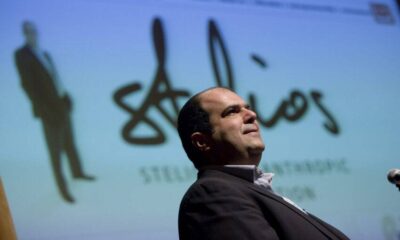Business
what I have learned as an entrepreneur

The working population is growing because people are living longer and choosing to retire later. The current workforce now consists of five generations.
We see Baby Boomers working alongside Gen Z, both generations apart with different needs and priorities, and with this generational diversity comes the need for multifaceted leadership approaches.
I have found it incredibly important to embrace different generations in the workplace as they all bring different perspectives, skills and experiences. However, it cannot be a one size fits all approach to ensuring job satisfaction. It is important to think about how you can attract different generations, but also retain talent and support growth.
In recent years, flexible working has been at the center of the conversation, and this is key to supporting the needs of different generations. Although younger generations have known nothing different, they can expect a level of hybrid working to support work-life balance, and this can be key to attracting talent to your business.
For other generations, there may be other factors driving the need for flexible working; whether supporting elderly parents, raising families or moving. As a business leader, I have found it extremely important to communicate regularly with employees to understand their needs outside of work, which can in turn lead to talent retention. Having structures that support flexibility, whether compressed working weeks, temporary, part-time or hybrid working, are all important to support employees.
However, I still see value in face-to-face interactions in the workplace, and communication is another factor to consider when working with a multi-generational workforce. The way we communicate at work has changed over the years and across generations. Generation Z and millennials have largely grown up in a digital world and may have preferences for fast online communication. This may differ from those who have experienced years of in-person meetings and phone conversations.
To ensure effective communication within a team, leaders must adapt their approach and understand preferences. For companies using exclusively online messaging platforms, consider the need for additional cross-generational training in both usage and language used. This can help reduce confusion and ensure efficient and effective communication methods.
Another factor to consider when leading a multi-generational workforce is how you promote and encourage wellness. On an individual basis, wellness can look very different, and importance should be placed on fostering a culture that supports employees. This should be a holistic approach, taking into account both mental and physical health. These considerations must be personalized not only for the company, but also for the generations within it, and the benefits that will resonate with them.
I think it is extremely important to listen to your team and open channels of communication where they can provide suggestions that will further support their well-being in the workplace. This can be one-on-one, but also via anonymous suggestions.
In my own journey in the working world, I have found mentorship to be personally rewarding, and this can be a huge support for several generations. Younger workers entering the workforce can talk to someone experienced in their field and gain insights and advice that can be extremely valuable to their careers and overall well-being.
For senior, more experienced employees, ‘Reverse Mentoring’, where junior members of the workforce transfer their knowledge, skills and perspectives to senior employees, can help promote learning and integration between generations. The constructive collaboration of different generations through mentoring can address the skills gap between generations and build a culture of communication and learning.
A final consideration when leading a multi-generational workforce is loyalty. Research for a recent PushFar whitepaper, ‘The State of Mentoring and Coaching’*, found that 3 in 4 Gen Z employees are likely to change their careers completely to find a job that aligns with their values and that provides additional training. This is a large part of the next generation of employees who value their needs over loyalty – and why wouldn’t they!
Job retention over 10 years for those over 55 is 60%, which drops to 40% for the 45-54 age group and to 20% for the 35-44 age group. ** This pattern of retention is evident across generations, as the way we view work has changed over time.
This should be at the forefront of the minds of business leaders; How do they support the next generation in the workplace to promote their loyalty? Ultimately, job hopping happens when employees don’t feel valued, aren’t paid fairly, or aren’t progressing and learning in a role. It is extremely important to think about each generation, along with each individual, and how you as a leader can support their job satisfaction and promote longevity.
While there are challenges in leading a multi-generational workforce, with the right training, support and attention, you’ll have a thriving and diverse team that provides valuable insights to grow and build your business.













